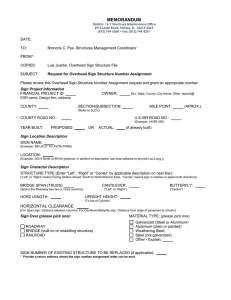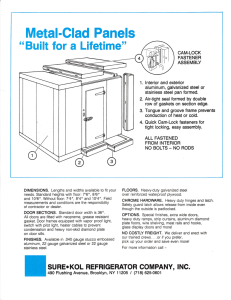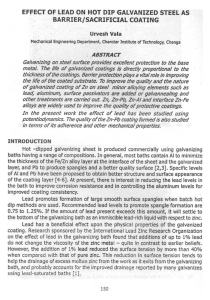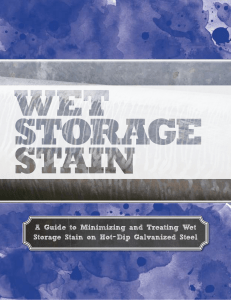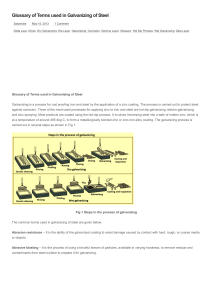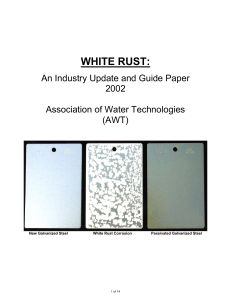Galvanized Finish
advertisement
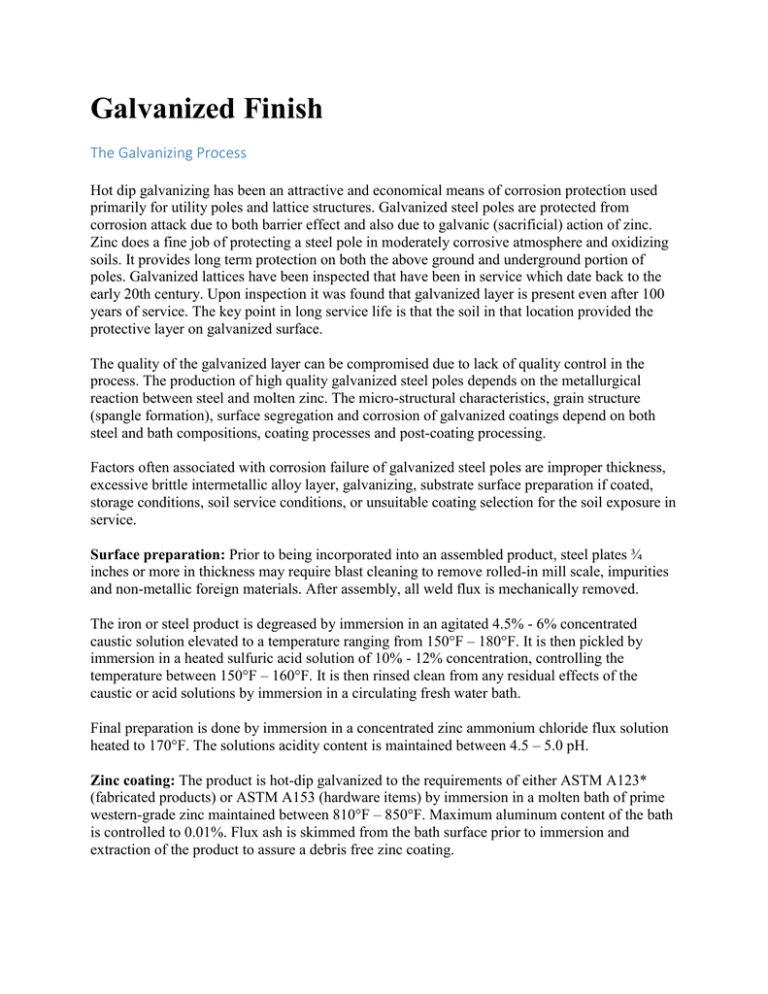
Galvanized Finish The Galvanizing Process Hot dip galvanizing has been an attractive and economical means of corrosion protection used primarily for utility poles and lattice structures. Galvanized steel poles are protected from corrosion attack due to both barrier effect and also due to galvanic (sacrificial) action of zinc. Zinc does a fine job of protecting a steel pole in moderately corrosive atmosphere and oxidizing soils. It provides long term protection on both the above ground and underground portion of poles. Galvanized lattices have been inspected that have been in service which date back to the early 20th century. Upon inspection it was found that galvanized layer is present even after 100 years of service. The key point in long service life is that the soil in that location provided the protective layer on galvanized surface. The quality of the galvanized layer can be compromised due to lack of quality control in the process. The production of high quality galvanized steel poles depends on the metallurgical reaction between steel and molten zinc. The micro-structural characteristics, grain structure (spangle formation), surface segregation and corrosion of galvanized coatings depend on both steel and bath compositions, coating processes and post-coating processing. Factors often associated with corrosion failure of galvanized steel poles are improper thickness, excessive brittle intermetallic alloy layer, galvanizing, substrate surface preparation if coated, storage conditions, soil service conditions, or unsuitable coating selection for the soil exposure in service. Surface preparation: Prior to being incorporated into an assembled product, steel plates ¾ inches or more in thickness may require blast cleaning to remove rolled-in mill scale, impurities and non-metallic foreign materials. After assembly, all weld flux is mechanically removed. The iron or steel product is degreased by immersion in an agitated 4.5% - 6% concentrated caustic solution elevated to a temperature ranging from 150°F – 180°F. It is then pickled by immersion in a heated sulfuric acid solution of 10% - 12% concentration, controlling the temperature between 150°F – 160°F. It is then rinsed clean from any residual effects of the caustic or acid solutions by immersion in a circulating fresh water bath. Final preparation is done by immersion in a concentrated zinc ammonium chloride flux solution heated to 170°F. The solutions acidity content is maintained between 4.5 – 5.0 pH. Zinc coating: The product is hot-dip galvanized to the requirements of either ASTM A123* (fabricated products) or ASTM A153 (hardware items) by immersion in a molten bath of prime western-grade zinc maintained between 810°F – 850°F. Maximum aluminum content of the bath is controlled to 0.01%. Flux ash is skimmed from the bath surface prior to immersion and extraction of the product to assure a debris free zinc coating. Zinc is a highly reactive metal. It exhibits a low corrosion rate only if a continuous passive film forms on the surface. A key requirement of corrosion control with zinc is that surface.
